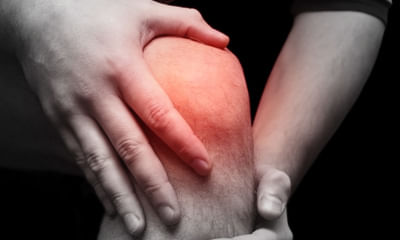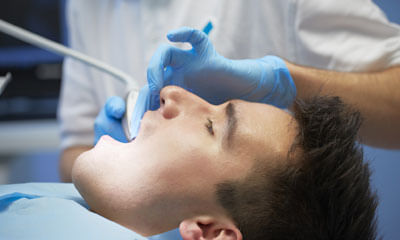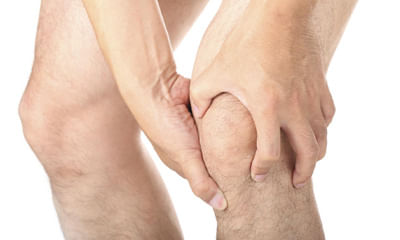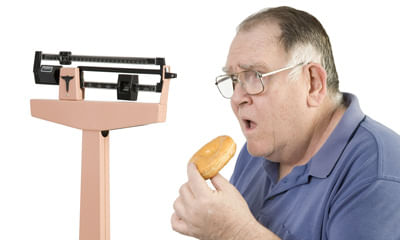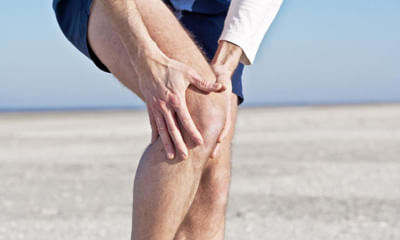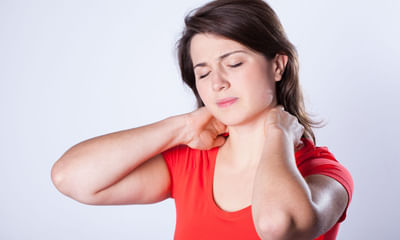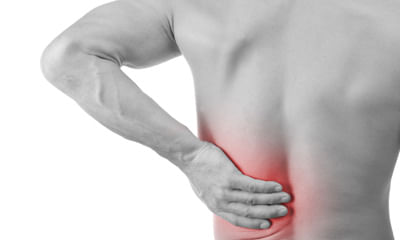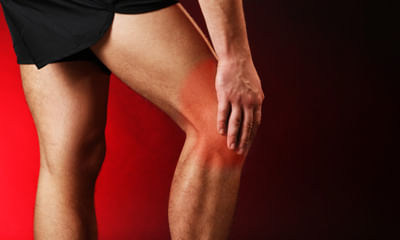Natural Pain Relieves
Hello sir, my mother age 58 years no diabetes, no chronic diseases. Present since she is suffering with both knee pains, ...
Ask Free Question
Ice therapy would definitely help to reduce the inflammation. We also advise you to use knee cap which would help to prevent the knee from damaging further and also to maintain the quadriceps muscle tone. Stiffness might have developed due to weakness of the ligaments &inflammed cartilage. Specific knee exercises will also help ie. Keeping ball underneath the knee and keep pressing it. That's the simple exercise which will help you to strengthen the knee. You need to consume good protein and iron diet in your body which will help you to break the fatigue and general body pain. However non veg foods definitely makes you to get increased with the toxin levels in the body and it makes your knee to have less fluid content in the system. In general we suggest patients who has knee pain to eat more water content vegetables which will definitely help you to feel better. This is a general knee pain and for this you can follow these measures: one keep a pillow right under the knee while sleeping, next is you can keep ice in the painful area for about 5--10 minutes, it looks like you are is important to check that. Anaemia always leads to the symptoms of being tired and also having body pain though there may not be any pathological reasons for knee pain. With knee exercises you will definitely feel better and muscles must be strengthened. •patellar tendinitis: •risk factor •a combination of factors may contribute to the development of patellar tendinitis, including: •physical activity. •running and jumping are most commonly associated with patellar tendinitis. Sudden increases in how hard or how often you engage in the activity also add stress to the tendon, as can changing your running shoes. •tight leg muscles. Tight thigh muscles (quadriceps) and hamstrings, which run up the back of your thighs, can increase strain on your patellar tendon. ••muscular imbalance. •if some muscles in your legs are much stronger than others, the stronger muscles could pull harder on your patellar tendon. This uneven pull could cause tendinitis. •chronic illness. •some illnesses disrupt blood flow to the knee, which weakens the tendon. Examples include kidney failure, autoimmune diseases such as lupus or rheumatoid arthritis and metabolic diseases such as diabetes. •complications •if you try to work through your pain, ignoring your body's warning signs, you could cause increasingly larger tears in the patellar tendon. Knee pain and reduced function can persist if you don't tend to the problem, and you may progress to the more serious patellar tendinopathy. •prevention •to reduce your risk of developing patellar tendinitis, take these steps: •don't play through pain. As soon as you notice exercise-related knee pain, ice the area and rest. Until your knee is pain-free, avoid activities that put stress on your patellar tendon. •strengthen your muscles. Strong thigh muscles are better able to handle the stresses that can cause patellar tendinitis. Eccentric exercises, which involve lowering your leg very slowly after extending your knee, are particularly helpful. •improve your technique. To be sure you're using your body correctly, consider taking lessons or getting professional instructions when starting a new sport or using exercise equipment. •therapy •a variety of physical therapy techniques can help reduce the symptoms associated with patellar tendinitis, including: •patellar tendon strap. A strap that applies pressure to your patellar tendon can help to distribute force away from the tendon and direct it through the strap instead. This may help relieve pain. •iontophoresis. This therapy involves spreading a corticosteroid medicine on your skin and then using a device that delivers a low electrical charge to push the medication through your skin. •platelet-rich plasma injection. This type of injection has been tried in some people with chronic patellar tendon problems. Studies are ongoing. It is hoped the injections might promote new tissue formation and help heal tendon damage. •probably your stamina would've gone down due to over use of the joints and the metabolic activity is more due to running. You need to consume good protein diet so that your body will act as a reservoir. It will help you to fight against rather than affecting one particular area of your body for eg. Knee joint. For knee ligament pain or inflammation you need to keep ice which will help you to prevent the inflammation progressing further. •patellofemoral pain syndrome •usually fully relieved with simple measures or physical therapy. It may recur, however, if you do not make adjustments to your training routine or activity level. It is essential to maintain appropriate conditioning of the muscles around the knee, particularly the quadriceps and the hamstrings. •there are additional steps that you can take to prevent recurrence of patellofemoral •they include: •wearing shoes appropriate to your activities •warming up thoroughly before physical activity •incorporating stretching and flexibility exercises for the quadriceps and hamstrings into your warm-up routine, and stretching after physical activity •increasing training gradually •reducing any activity that has hurt your knees in the past •maintaining a healthy body weight to avoid overstressing your knees ••d cartilageacl •joints, ie. In the upper limbs if the pain is present in the fingers/wrist and in the lower limbs it the pain is present in the toes/ ankle, then we shall definitely say it is rheumatic arthritis. •if your proximal joints (ie. Shoulder, hip & knee has pain) then you can pour hot (warm) water in that area to reduce the inflammation. If you have pain in the distal joints ie. Wrist, fingers, ankle, toes then you can wear either elbow brace or wrist brace which will help you to feel warm and very protective. And also immerse the distal joints in the hot water tub which will help you to reduce the pain. ••knee pain during driving or watching movie. •it might due to lack of movements in the knee while the joints are immobilized during driving and while watching movies. It is important that you need to have movements in and around the knee so that the blood flow will not be disturbed. •knee ligament laxity•if you have problem in your legs then it might be due to ligament laxity where your legs would become very weak due to the old ligament injury and that should be treated immediately. •wear knee cap so that you will feel firm while walking or climbing stairs.•this is a general strain and for this you can follow these measures: one keep a pillow right under the knee while sleeping, next is you can keep ice in the painful area for about 5--10 minutes, if pain still persists you can stretch your body by twisting the waist on both sides how we used to do in the school drill similarly you can try! one time you can do hot water fermentation that would help to reduce the muscle strain.•legs becoming numb and also pain is there when the patient walks for 10-15 minutes?•it looks like you are anaemic. If you feel that the legs are becoming numb then keep your legs warm which is important, probably you can wear mcr chappals inside the house/ socks inside the house. Put a door mat when ever you sit so that you will feel comfortable. Also pour warm water in the legs which would help you to get better circulation. •knee pain. If you are overweight, losing weight will also help to reduce pressure on your knee. •knee pain, when leg folding time get pain. The importance of buying braces and splints from us – orthopaedic support braces we suggest you to wear knee brace which is available at our clinic. If you want you can buy from us, if you are far away from chennai we can send you by courier. The reason why we are conveying you to buy from us is we can demonstrate over the videocall (using whatsapp) and also we can monitor you throughout when to wear it and how long to wear it. And also if you find any difficulty wearing the brace you can also revert back to us for few more suggestions and we can propose you good solution how to go about it. Resisted terminal knee extension: make a loop with a piece of elastic tubing by tying a knot in both ends. Close the knot in a door at knee height. Step into the loop with your injured leg so the tubing is around the back of your knee. Lift the other foot off the ground and hold onto a chair for balance, if needed. Bend the knee with tubing about 45 degrees. Slowly straighten your leg, keeping your thigh muscle tight as you do this. Repeat 15 times. Do 2 sets of 15. If you need an easier way to do this, stand on both legs for better support while you do the exercise. Standing calf stretch: stand facing a wall with your hands on the wall at about eye level. Keep as arthritis is very common that you get generally bilaterally. Ice therapy would definitely help to reduce the inflammation. We also advise you to use knee cap which would help to prevent the knee from damaging further and also to maintain the quadriceps muscle tone 1. Heel and calf stretch 2. Quadriceps stretch to do this stretch: 1. Stand next to a wall or use a chair for support. Your feet should be shoulder-width apart. 2. Bend one knee so your foot goes up toward your glutes. 3. Grab your ankle and gently pull it toward your glutes as far as you can comfortably. 4. Hold for 30 seconds. 5. Return to the starting position and change legs. 6. Repeat 2 times on each side. You need to consume good protein and iron diet in your body which will help you to break the fatigue and body pain. You have to reduce the weight by walking minimum 1 km per day. Slowly reduce the weight and slowly avoid adding salt in the diet which will help you to prevent water retention in the body. Excess salt in general leads to water in the body which might be the reason for you to have leg pain. Hotwater fermentation that would help you to get relieved from joint pains. But food precautions, it is better to avoid tamarind in the food rather to add lime or mango. You can generally do basic aerobic exercises which will definitely help to improve the body weakness. Consume good protein and vitamin diet which will help you to improve your weakness of the whole body. You can give good vitamin d and calcium which will help to have quick healing. If you are a non veg person consume seer fish or if you are a veg person eat mushrooms which has vitamin d3. You need to consume water content vegetables which will make you feel hydrated. A good brace will protect your knee and take the pressure off your meniscus, allowing it to rest. Your doctor may recommend the rice regimen—rest, ice, compression, and elevation—to treat a eroded cartilage which is the main reason for the synovial fluid to get drained. Resting your knee can help relieve your symptoms. Steps to heal a worn out cartilage naturally: rest: it's crucial to rest your knee after it starts to ache. You should not participate in activities where you could cause additional strain. Ice: apply ice to your knee for 15 minutes at four-hour intervals.
My 6 years old daughter is complaining about pain in the teeth and gum. Ho to relieve from the pain. ...
Ask Free Question
Pls get it chked, if it is because of food lodgement between teeth, or cavitry in tooth.. the earleir u get it chked the better it will be, .. A stitch in time saves nine
Hello doctor. I am nikhil, I am very active person, whenever I use to do squat I felt little pain in my knees. But on se ...
Ask Free Question
Avoid squatting and pivoting, which are likely to place too much pressure on the knee. To speed the recovery, you can: 7.Rest the knee. 8.Ice your knee to reduce pain and swelling. 9.Compress your knee. 10.Elevate your knee with a pillow under your heel when you're sitting or lying down. 11.Take anti-inflammatory medications. 12.Use stretching and strengthening exercises to help reduce stress to your knee. Will a knee brace help a torn meniscus? Yes. Although knee braces do not heal or treat your meniscus tear directly, they can provide extra support and stability for your knee while your meniscus injury heals. A good brace will protect your knee and take the pressure off your meniscus, allowing it to rest. Your doctor may recommend the rice regimen—rest, ice, compression, and elevation—to treat a meniscus tear. Resting your knee can help relieve your symptoms. Your doctor may suggest using a cane for a few weeks to keep weight off your knee and to stay away from physical activity that may have contributed to the injury. Steps to heal a torn meniscus naturally: rest: it's crucial to rest your knee after injury. You should not participate in activities where you could cause additional strain. Ice: apply ice to your knee for 15 minutes at four-hour intervals.
My age is 19 now. I masturbate 4 times in a week. 1) can it hamper the growth of my penis? 2) how many times in a week, ...
Ask Free Question
Only twice a week is fine. Excessive masturbation may leads to the damage of nerves supplying penis. Which in future leads to quick ejaculation, weak erection or erectile dysfunction, shrinkage of penis, low sexual stamina, other than that whole body weakness, weak eye sight, loss of appetite, loss of facial lusture, weak digestion, low memory power, hairfall, anxiety, etc.
I am g atta, age 46 weight 67, hight 6" 6'bp normal. I am diabetic but sugar under control. I have foot pain and leg mus ...
Ask Free Question
Greetings from ortho clinic, a diabetic diet in india is similar to a healthy balanced diet recommended for individuals with diabetes worldwide. The key principles of a diabetic diet involve managing carbohydrate intake, incorporating a variety of foods, controlling portion sizes, and promoting regular physical activity. Here are some general guidelines for a diabetic diet in india: 1. Carbohydrate management: - opt for complex carbohydrates such as whole grains (brown rice, whole wheat, millets), legumes, and vegetables. - limit the intake of refined carbohydrates like white rice, white bread, sugary drinks, and sweets. - monitor the quantity of carbohydrates consumed and distribute them evenly throughout the day. 2. Portion control: - control portion sizes to maintain a healthy weight and manage blood sugar levels. - use measuring cups, spoons, or a food scale to accurately measure portions. - include a variety of foods from different food groups to ensure a balanced diet. 3. Emphasize fiber-rich foods: - consume high-fiber foods such as whole grains, fruits, vegetables, legumes, and nuts. - fiber helps regulate blood sugar levels, improves digestion, and provides a feeling of fullness. 4. Healthy fat choices: - choose healthier sources of fats like nuts, seeds, avocados, olive oil, and fatty fish (such as salmon) rich in omega-3 fatty acids. - limit saturated fats found in red meat, full-fat dairy products, and fried foods. 5. Include lean proteins: - include lean protein sources such as skinless chicken, turkey, fish, low-fat dairy products, tofu, and legumes. - protein helps in building and repairing tissues, and it doesn't significantly impact blood sugar levels. 6. Limit added sugars and sugary drinks: - minimize the consumption of sugary foods, desserts, sweets, and beverages. - opt for naturally sweet foods like fruits and limit the intake of fruit juices. 7. Regular physical activity: - engage in regular exercise such as brisk walking, jogging, cycling, or any activity recommended by your healthcare provider. - physical activity helps in improving insulin sensitivity and managing blood sugar levels. It's important to note that these are general guidelines, and it's advisable to work with a registered dietitian or a healthcare professional to create a personalized diabetic diet plan based on your specific needs, preferences, and any other health conditions you may have. They can provide you with detailed guidance and help you make appropriate dietary adjustments. Please contact whats app mobile for free dietary reversal for diabetes.
My front part of the tongue us burning and feeling bitter taste and excess saliva. I know the reason 4 days ago I accide ...
Ask Free Question
It sounds like you have a burn on your tongue from the hot water you drank four days ago. While minor burns usually heal on their own within a week or two, the red objects you're seeing and the bitter taste suggest a more serious burn that may require medical attention. Here's what you can do: seek professional help: consult a doctor or dentist: it's important to get your tongue checked by a medical professional to assess the severity of the burn and rule out any potential infections. They can provide proper treatment and advice on managing the pain and discomfort. Home remedies for mild burns: cool down the burn: rinse your mouth with cool water or suck on ice chips to ease the burning sensation. Avoid hot liquids and foods which can further irritate the burn. Pain relief: over-the-counter pain relievers like ibuprofen or acetaminophen can help manage the pain and inflammation. Salt-water rinse: mix 1/2 teaspoon of salt in a glass of warm water and rinse your mouth several times a day. This can help reduce swelling and infection. Honey: applying a thin layer of honey to the burn can promote healing and provide some pain relief. However, avoid honey if you have diabetes or any allergies. Avoid spicy or acidic foods: these can irritate the burn and aggravate the discomfort. Maintain good oral hygiene: brush your teeth gently and floss regularly to prevent infection. Remember: if the red objects on your tongue appear white or yellow, it could be a sign of infection and needs immediate medical attention. If the pain worsens, you develop a fever, difficulty swallowing, or difficulty breathing, seek immediate medical attention. Don't try to burst any blisters that may form on your tongue. Let them heal naturally to avoid scarring. It's important to prioritize your health and seek professional help for proper diagnosis and treatment. Following these recommendations and getting medical advice can help ensure your tongue heals quickly and comfortably. Please remember that I am not a medical professional and this information should not be taken as a substitute for professional advice. Always consult with your doctor or dentist for any medical concerns.
I have a bucket handle meniscus tear and an acl tear. I can keep my knees straight but I cannot walk. My doctor is recom ...
Ask Free Question
Meniscus injury a torn meniscus can result from any activity that causes you to forcefully twist or rotate your knee, such as aggressive pivoting or sudden. What are 3 signs of a meniscus injury? Swelling or stiffness. Pain, especially when twisting or rotating your knee. Difficulty straightening your knee fully. Feeling as though your knee is locked in place when you try to move it. Typically, mild meniscus tears heal within two to three weeks. What is a meniscal injury? A meniscus tear is an injury to a part of your knee called the meniscus and is a common injury. The menisci are two crescent-shaped pads of thick, rubbery shock-absorbing cartilage in your knee joint. They lie between your thigh bone (femur) and your shin bone (tibia). In the case of meniscus tears, some people think the injury will heal over time on its own. But the truth is that there are different types of meniscus tears — and some tears won't heal without treatment. If your tear is on the outer one-third of the meniscus, it may heal on its own or be repaired surgically. If your doctor has told you that you don't need surgery to repair your torn meniscus, you may be given the green light to walk. However, you'll want to be very careful about movements that might worsen the tear or cause you pain. Avoid squatting and pivoting, which are likely to place too much pressure on the knee. To speed the recovery, you can: 1.Rest the knee. 2.Ice your knee to reduce pain and swelling. 3.Compress your knee. 4.Elevate your knee with a pillow under your heel when you're sitting or lying down. 5.Take anti-inflammatory medications. 6.Use stretching and strengthening exercises to help reduce stress to your knee. Will a knee brace help a torn meniscus? Yes. Although knee braces do not heal or treat your meniscus tear directly, they can provide extra support and stability for your knee while your meniscus injury heals. A good brace will protect your knee and take the pressure off your meniscus, allowing it to rest. Your doctor may recommend the rice regimen—rest, ice, compression, and elevation—to treat a meniscus tear. Resting your knee can help relieve your symptoms. Your doctor may suggest using a cane for a few weeks to keep weight off your knee and to stay away from physical activity that may have contributed to the injury. Steps to heal a torn meniscus naturally: rest: it's crucial to rest your knee after injury. You should not participate in activities where you could cause additional strain. Ice: apply ice to your knee for 15 minutes at four-hour intervals.
I am a 27-year-old mum, I suddenly felt a sharp intense muscle pain while having intercourse with my husband and since t ...
Ask Free Question
Hello- some women feel sharp stinging pains at the entry of their vagina and others feel the pain deep inside. Others hurt in their uterus or in other internal sexual organs. The fact is, no matter where you are feeling the pain, it is most assuredly related to the same cause. Dyspareunia may be experienced with sexual penetration. It can occur with certain sex partners or under certain circumstances, even while inserting a tampon. New pain (after previously pain-free intercourse), superficial entry pain, deep pain during thrusting, and burning or aching pains are all symptoms of dyspareunia. There are a number of effective natural treatments for intercourse pain. A combination of dong quai, american ginseng, saw palmetto, wild yam, black cohosh, and yohimbe relieves involuntary vaginal reflex and alleviates intercourse pain. Aloe vera is helpful for infections and is known for its healing effects. It can be applied topically to relieve itching, taken internally, or used in a douche.
I had acl reconstruction plus complex lateral meniscus repair surgery on 22nd may, when can I start with partial weight ...
Ask Free Question
Meniscus injury a torn meniscus can result from any activity that causes you to forcefully twist or rotate your knee, such as aggressive pivoting or sudden. What are 3 signs of a meniscus injury? Swelling or stiffness. Pain, especially when twisting or rotating your knee. Difficulty straightening your knee fully. Feeling as though your knee is locked in place when you try to move it. Typically, mild meniscus tears heal within two to three weeks. What is a meniscal injury? A meniscus tear is an injury to a part of your knee called the meniscus and is a common injury. The menisci are two crescent-shaped pads of thick, rubbery shock-absorbing cartilage in your knee joint. They lie between your thigh bone (femur) and your shin bone (tibia). In the case of meniscus tears, some people think the injury will heal over time on its own. But the truth is that there are different types of meniscus tears — and some tears won't heal without treatment. If your tear is on the outer one-third of the meniscus, it may heal on its own or be repaired surgically. If your doctor has told you that you don't need surgery to repair your torn meniscus, you may be given the green light to walk. However, you'll want to be very careful about movements that might worsen the tear or cause you pain. Avoid squatting and pivoting, which are likely to place too much pressure on the knee. To speed the recovery, you can: 1.Rest the knee. 2.Ice your knee to reduce pain and swelling. 3.Compress your knee. 4.Elevate your knee with a pillow under your heel when you're sitting or lying down. 5.Take anti-inflammatory medications. 6.Use stretching and strengthening exercises to help reduce stress to your knee. Will a knee brace help a torn meniscus? Yes. Although knee braces do not heal or treat your meniscus tear directly, they can provide extra support and stability for your knee while your meniscus injury heals. A good brace will protect your knee and take the pressure off your meniscus, allowing it to rest. Your doctor may recommend the rice regimen—rest, ice, compression, and elevation—to treat a meniscus tear. Resting your knee can help relieve your symptoms. Your doctor may suggest using a cane for a few weeks to keep weight off your knee and to stay away from physical activity that may have contributed to the injury. Steps to heal a torn meniscus naturally: rest: it's crucial to rest your knee after injury. You should not participate in activities where you could cause additional strain. Ice: apply ice to your knee for 15 minutes at four-hour intervals.
In a bike accident, I met with an injury of medial meniscus horizontal tear for the right leg. I'm interested to hear ab ...
Ask Free Question
Meniscus injury a torn meniscus can result from any activity that causes you to forcefully twist or rotate your knee, such as aggressive pivoting or sudden. What are 3 signs of a meniscus injury? Swelling or stiffness. Pain, especially when twisting or rotating your knee. Difficulty straightening your knee fully. Feeling as though your knee is locked in place when you try to move it. Typically, mild meniscus tears heal within two to three weeks. What is a meniscal injury? A meniscus tear is an injury to a part of your knee called the meniscus and is a common injury. The menisci are two crescent-shaped pads of thick, rubbery shock-absorbing cartilage in your knee joint. They lie between your thigh bone (femur) and your shin bone (tibia). In the case of meniscus tears, some people think the injury will heal over time on its own. But the truth is that there are different types of meniscus tears — and some tears won't heal without treatment. If your tear is on the outer one-third of the meniscus, it may heal on its own or be repaired surgically. If your doctor has told you that you don't need surgery to repair your torn meniscus, you may be given the green light to walk. However, you'll want to be very careful about movements that might worsen the tear or cause you pain. Avoid squatting and pivoting, which are likely to place too much pressure on the knee. To speed the recovery, you can: 1.Rest the knee. 2.Ice your knee to reduce pain and swelling. 3.Compress your knee. 4.Elevate your knee with a pillow under your heel when you're sitting or lying down. 5.Take anti-inflammatory medications. 6.Use stretching and strengthening exercises to help reduce stress to your knee. Will a knee brace help a torn meniscus? Yes. Although knee braces do not heal or treat your meniscus tear directly, they can provide extra support and stability for your knee while your meniscus injury heals. A good brace will protect your knee and take the pressure off your meniscus, allowing it to rest. Your doctor may recommend the rice regimen—rest, ice, compression, and elevation—to treat a meniscus tear. Resting your knee can help relieve your symptoms. Your doctor may suggest using a cane for a few weeks to keep weight off your knee and to stay away from physical activity that may have contributed to the injury. Steps to heal a torn meniscus naturally: rest: it's crucial to rest your knee after injury. You should not participate in activities where you could cause additional strain. Ice: apply ice to your knee for 15 minutes at four-hour intervals.

